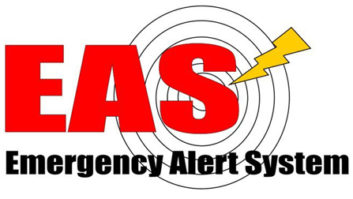A new Emergency Alert System event code likely is coming soon. The Federal Communications Commission is set to vote next month on a plan to create a dedicated event code for missing and endangered persons.
Chairwoman Jessica Rosenworcel says the new three-character code MEP will save lives by helping people who are missing, at risk of being overlooked and in danger.
Rosenworcel has been working to raise awareness on this issue, working with Sen. Ben Luján among others. In March the commission unanimously agreed to open a notice of proposed rulemaking.
The chairwoman said in a statement that while law enforcement agencies have used AMBER Alerts on TV and radio to help mobilize public attention and recover abducted children, “we do not have a similar code in the Emergency Alert System dedicated to sounding the alarm over other missing and endangered persons, particularly the thousands of missing native and indigenous women who have disappeared from their homes never to be seen again.”
The MEP alert code will help fill a gap by bringing attention to missing and endangered people of all ages who do not qualify for AMBER Alerts, Rosenworcel said. Last year, approximately 188,000 adults who were reported missing in the United States fell outside the criteria for AMBER Alerts, according to the commission.
AMBER Alerts have contributed to the safe recovery of more than 1,200 children, according to the FCC.
The new initiative will be particularly beneficial to tribal communities, Rosenworcel said, noting that American Indian and Alaska Native people are at a disproportionate risk of violence, murder or vanishing. The initiative also would promote the development of compatible and integrated Ashanti Alert plans throughout the U.S., consistent with the Ashanti Alert Act.
That act established a voluntary nationwide communication network to aid in the search and recovery of missing adults between the ages of 18 and 65. It was named for Ashanti Billie, who was abducted and killed in 2017.
The chairwoman says the MEP event code “would enable a more rapid and coordinated response to incidents, and build on efforts by Tribal Nations, the Department of Interior and the Department of Justice, to collect comprehensive data on missing and endangered Indigenous person cases.”
National implementation of the MEP code received broad support from tribal organizations during the comment period this year. The Navajo Nation, which provides governmental services to 400,000 members across Arizona, New Mexico and Utah, said adopting the Ashanti Alert will “facilitate the rapid and coordinated delivery of alert notifications about missing and endangered persons to the public in a uniform and consistent manner.”
Native Public Media urged the FCC to implement the event code, telling the commission: “By harnessing the power of IPAWS and fostering strong government-to-government relationships with tribal nations, the commission has a unique opportunity to build a system that can make a meaningful difference in the lives of indigenous communities across the country.”
The FCC order would establish a year-long period to enable the usage of the MEP EAS event code over EAS. The commission acknowledges that “implementation is not merely turnkey” and that “some time is necessary for equipment manufacturers to prepare.”
EAS equipment manufacturers will need the time to integrate the event code into equipment not yet manufactured or sold, and to make necessary software upgrades available to EAS participants, according to the FCC.
The order would also authorize the MEP event code for use in Wireless Emergency Alerts.
The FCC’s August meeting is scheduled for Aug. 7.







